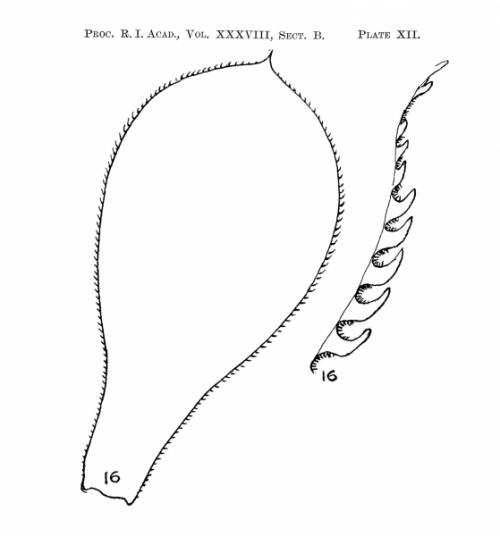x lambii Bramwell & G.D.Rowley, 1973
Aeonium palmense Webb ex H.Christ × Aeonium valverdense (Praeger) Praeger
[or Aeonium canariense (L.) Webb & Berthel. × Aeonium valverdense (Praeger) Praeger when A. palmense is considered to be included in A. canariense. (Art. H.5.2)]
Aeonium palmense Webb ex H.Christ × Aeonium valverdense (Praeger) Praeger, Semperviva of the Canary Islands area, Proceedings of the Royal Irish Academy 38 Sect.B (1): 478-479, t.12, fig. 16. (24 Sep) 1929.
Aeonium ×lambii Bramwell & G.D.Rowley, in Jacobsen & Rowley, Some name changes in succulent plants, Part V, National Cactus and Succulent Journal 28(1): 5. (Mar) 1973.
Aeonium edgarii P.V.Heath, The type of Aeonium Webb & Berthelot, Calyx 2(2): 58. (Oct) 1992 nom. illeg. (Art. 52.1).
Etym: Named for Edgar Lamb (1904-1980).
T: Islas Canarias, Hierro.
HT: Sketch of leaf, in Praeger, Semperviva of the Canary Islands area, Proceedings of the Royal Irish Academy 38 Sect.B (1): 474, t.12, fig. 16. (24 Sep) 1929. Autotype (Art. 9.1). The only included element.
Description (according to Praeger, An Account of the Sempervivum Group, 1932) :
Intermediate between the parents. Perennial, erect, branched, 2 feet high.
Stem 2 cm thick, bare save at apices of branches.
Leaves intermediate, with the roughish surface of valverdense, and more or less of the pubescence of palmense, tending to droop and to twist as in valverdense.
Flowers yellowish-pink.
Habitat : Canary Islands : Hierro, with the parents.
In Proceedings of the Royal Irish Adacemy, 1929, Praeger wrote :

Aeonium ×lambii Bramwell & G.D.Rowley [not (Voggen.) Bañares]. HT from Praeger, Semperviva of the Canary Islands area, Proceedings of the Royal Irish Academy 38 Sect.B (1): 474, t.12, fig. 16. (24 Sep) 1929.